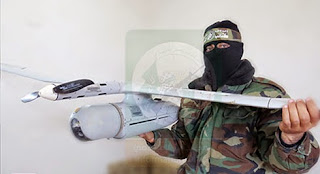I feel that future development of unmanned aerial systems
(UASs) will have the greatest impact to society compared to the future impacts
of unmanned marine and ground systems. The reason why I feel this way is based
on three key industries that will be greatly affected by UAS development; agriculture,
transportation, and defense. These three
industries account for the most important sectors of the economy according to
the US Department of commerce. Agriculture is number one for the United States,
but also plays an absolutely essential role in lesser developed counties as
well. Transportation is essential because it links all over services and
industries to the end user, and defense is important because ultimately, when politics
fail, it’s the county with the best military remains in power. Marine and
ground based unmanned systems will continue to develop and shape these sectors,
but opening the aerial layer to industry will provide previously unobtainable
perspective, convenience, and progress.
Agriculture: There are two major aspects to agriculture that
will be affected by the development of UASs; precision agriculture, and crop
dusting and treatment. Precision agriculture is a farming technique that uses high
tech overhead imagery to observe, measure, and respond to inter and intra field
variability. In the past this could only be done via satellite or manned
aircraft which resulted in costs that were too high for the average farmer to
afford. Today, with the introduction of UASs, every farmer, no matter how big
or small, is gaining access to this ability. The use of unmanned crop dusting
and crop treatment is complimented by precision agriculture. The ability to
link both precision agriculture and unmanned crop treatment means a small
farmer could optimize their land to provide the highest and most cost effective
crop yield scientifically possible. If applied over a large enough population,
this technology could change global food yield and resources for the better.
Transportation: The transportation sector is the link
between industry and the end users. The transportation sector touches almost
every other sector of the global economy in some way. As globalization
continues, the importance of effective and fast transposition of people and
goods is becoming more important every day. The ability to fly long distance global
missions can be accomplished cheaper and more efficient with large scale UASs.
In terms of local and hyperlocal transportation, the use of small quadcopter
may become the standard method of local delivery. Amazon has been working with
the FAA to start a new program in which deliveries could be made by quadcopters
within a local area. This could be a start to a future of bustling UAS highways
in the air. Not only could it reduce traffic, emissions, and delivery times,
but it could launch counties without proper road networks into the 21st
century for minimal costs.
Defense: Currently, only a few countries rely on military
UASs as heavily as the United States. It is clear that the introduction of the
UAS has redefined the battlefield, but the one aspect of this technology that
will effect society in the future is its availability. As UAS technology
becomes cheaper and more accessible it will be spread to all international
powers regardless of state affiliation, size, or political standing. In the
future we could see separatist states, terrorists, or major adversaries gain
access to extremely dangerous weapons and use them to disrupt peace and
stability globally.
References:
Becker, S. (2014, July 1). What Are the Most Important
Sectors in the U.S. Economy? Retrieved May 20, 2015, from http://www.cheatsheet.com/business/what-are-the-most-important-sectors-in-the-u-s-economy.html/?a=viewall
Gopal, S. (2015, February 20). Drones: The Game Changers in Future Wars. Retrieved May 20, 2015, from http://www.indiandefencereview.com/news/drones-the-game-changers-in-future-wars/
Grassi, M. (2015, May 7). FAA Enters Partnerships To
Consider Beyond Line-Of-Sight UAV Missions | PrecisionAg. Retrieved May 20,
2015, from http://www.precisionag.com/data/imagery/faa-enters-partnerships-to-consider-beyond-line-of-sight-uav-missions/
Jones- Cruise, C. (2015, March 18). Amazon Receives Patent
for Drone Delivery System. Retrieved May 20, 2015, from http://learningenglish.voanews.com/content/amazon-receives-patent-for-drone-delivery-system/2776033.html











